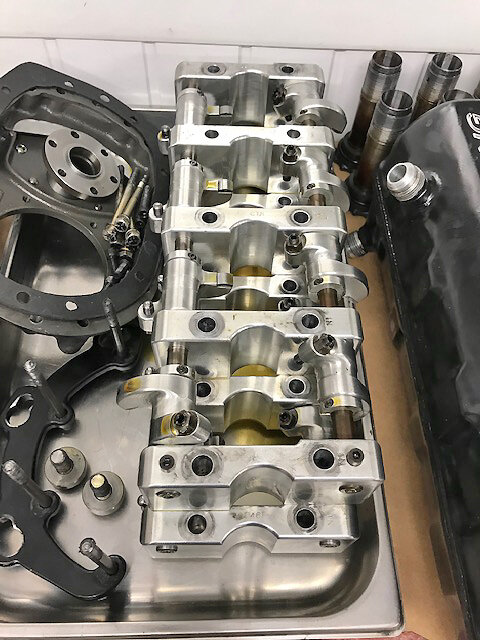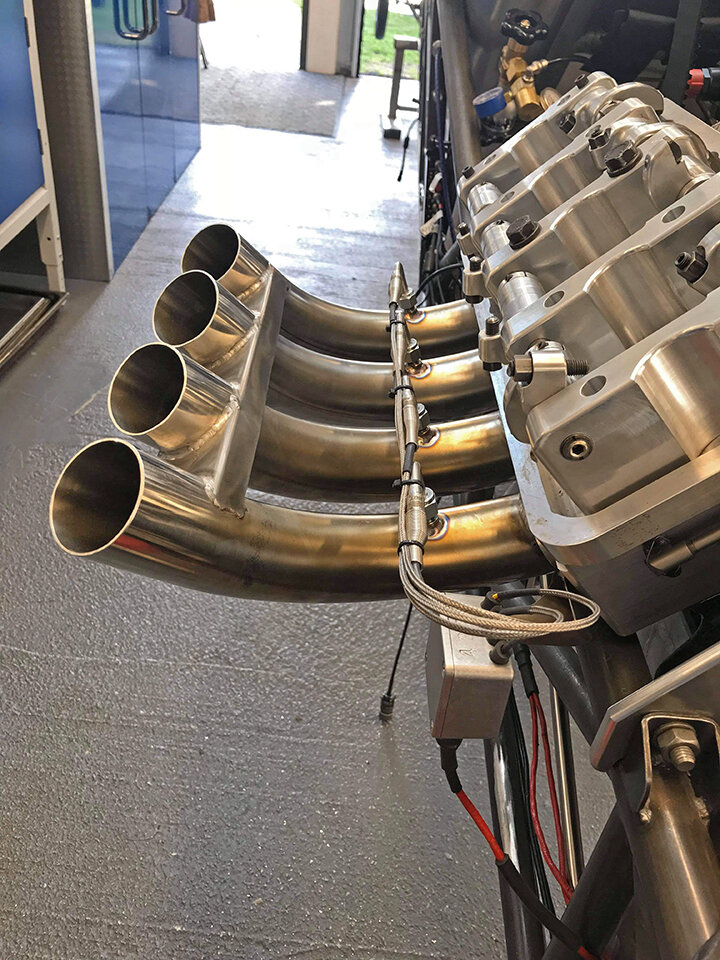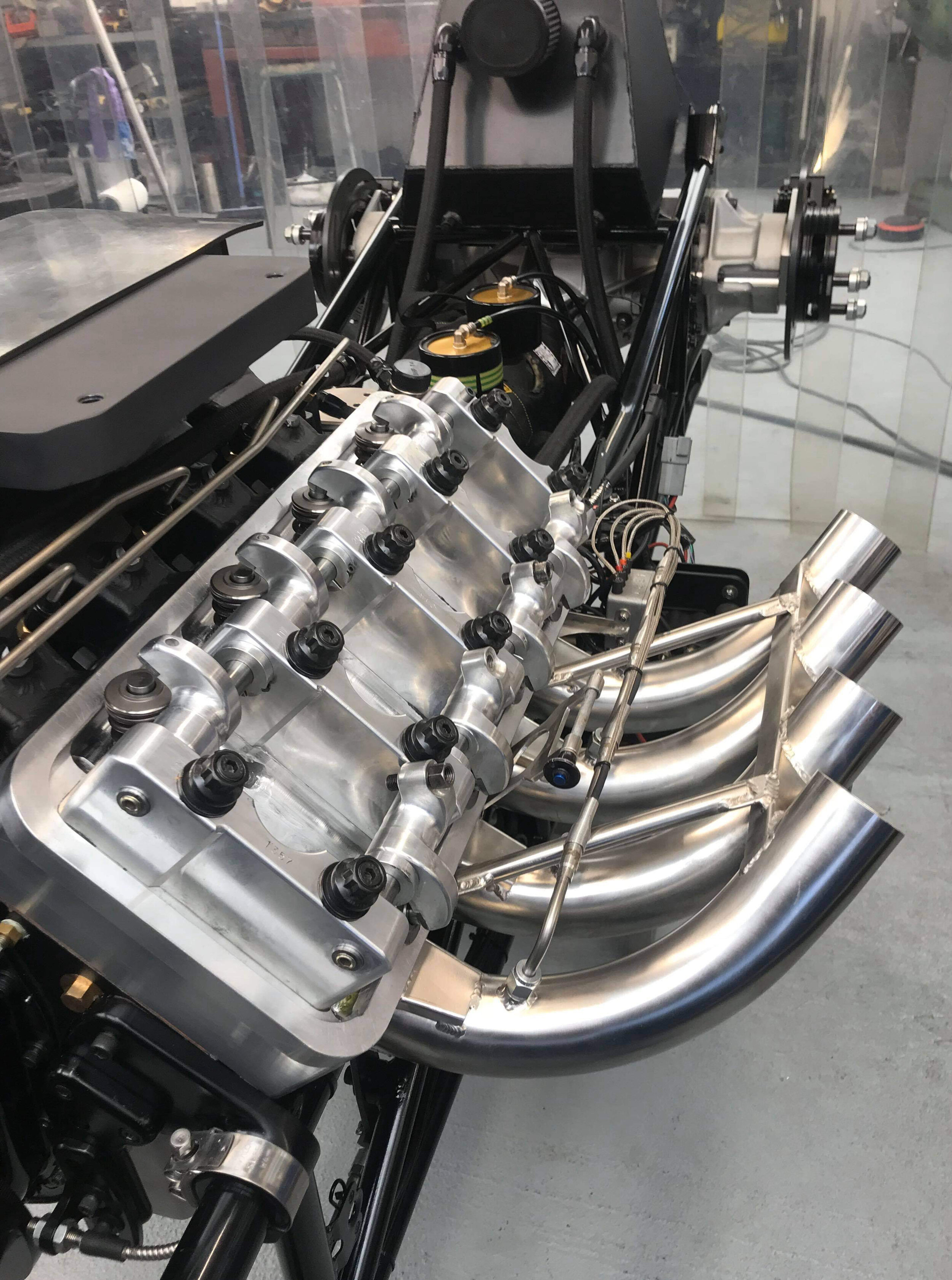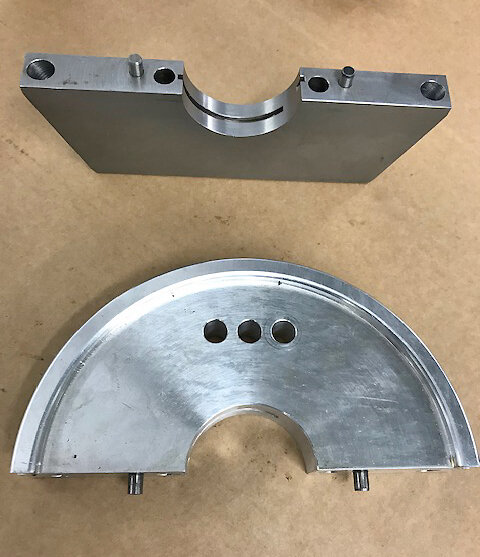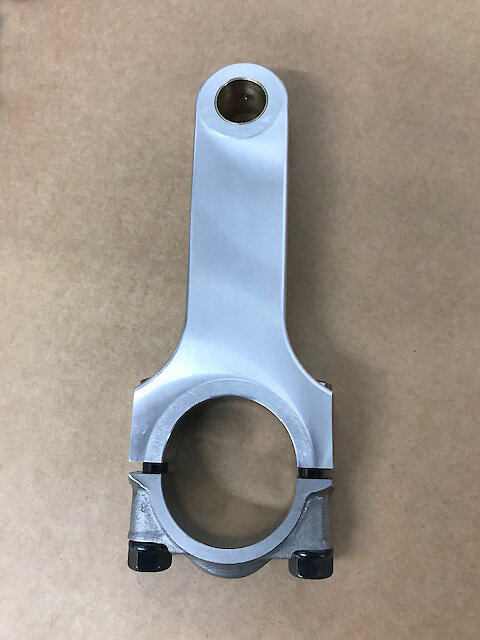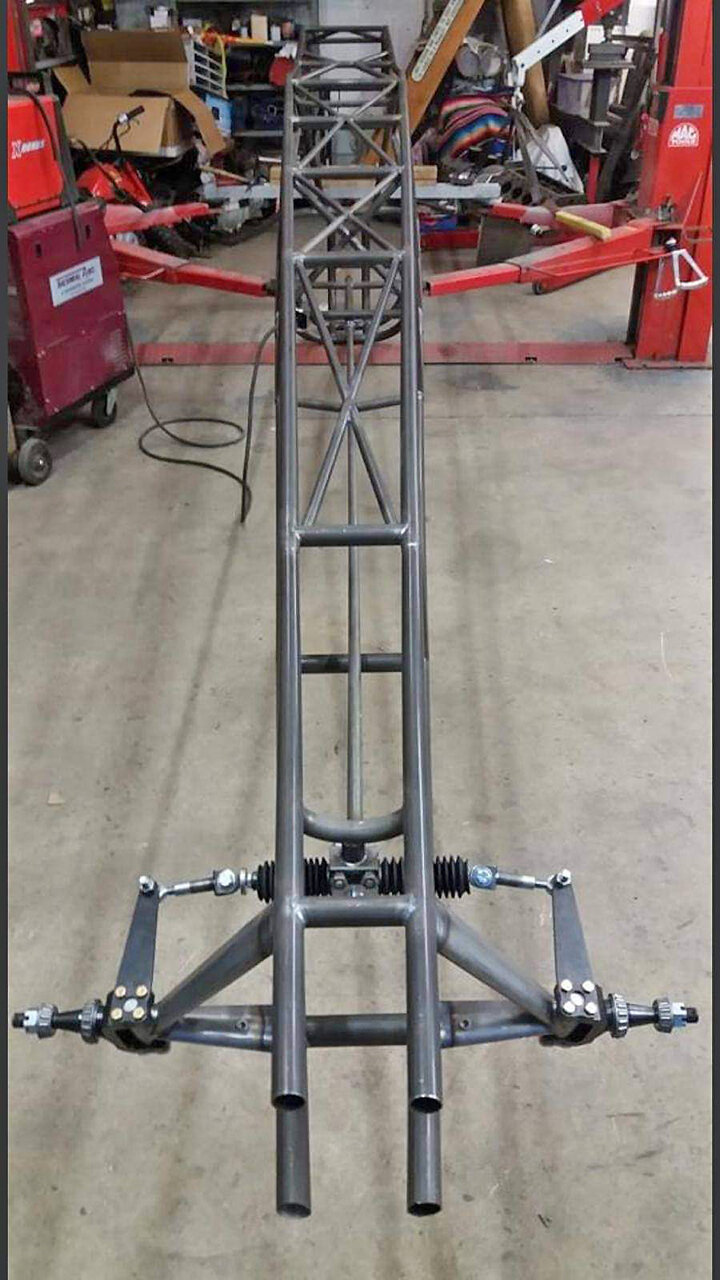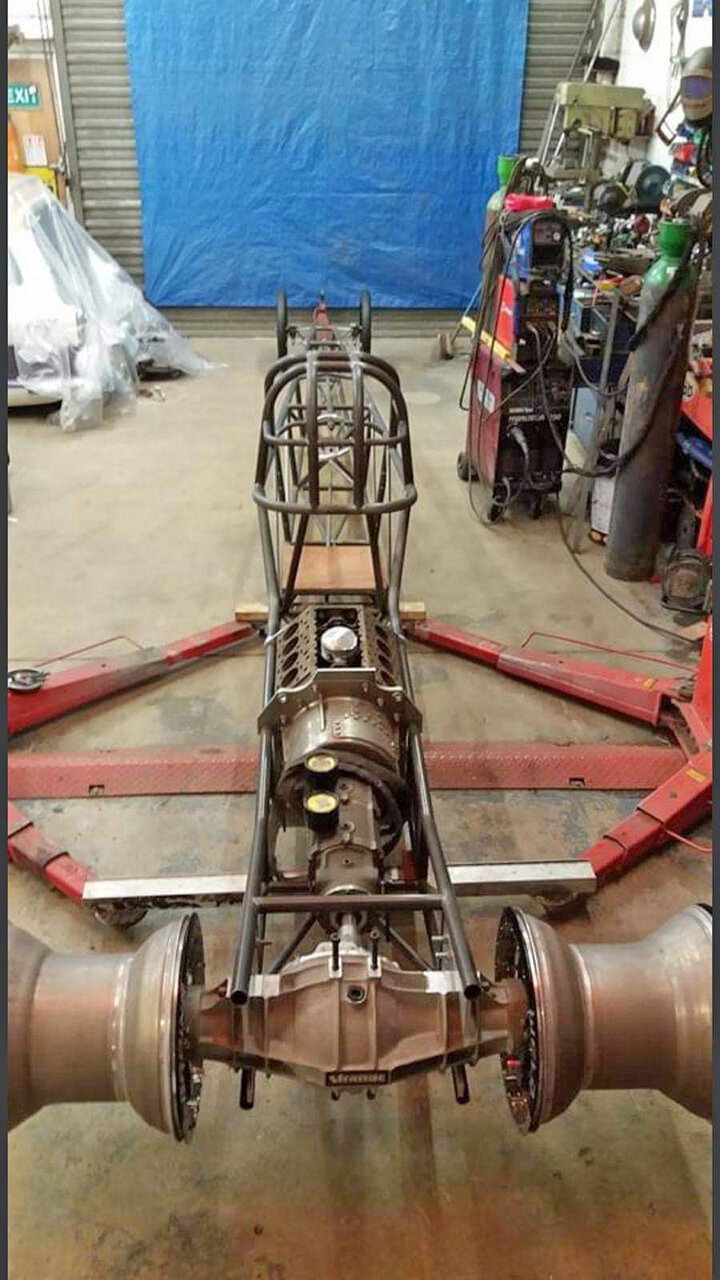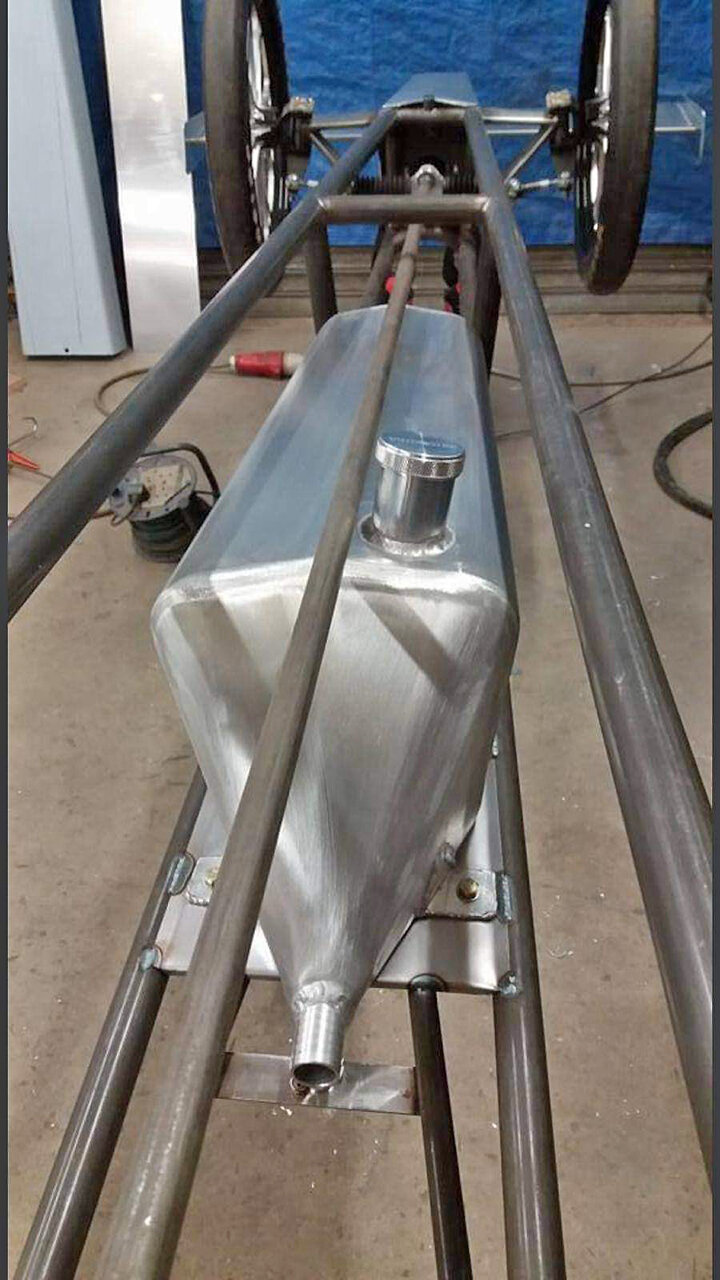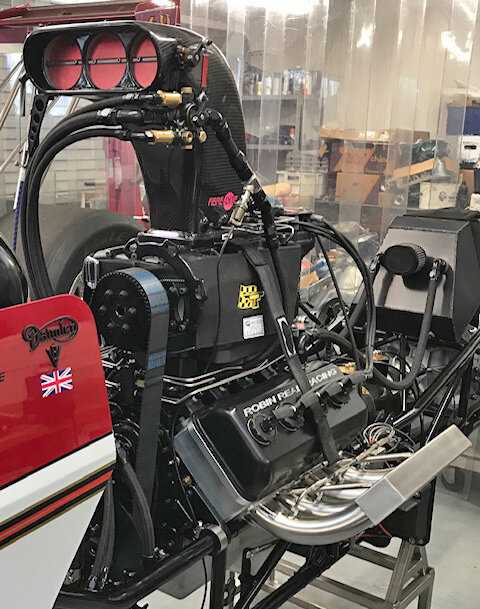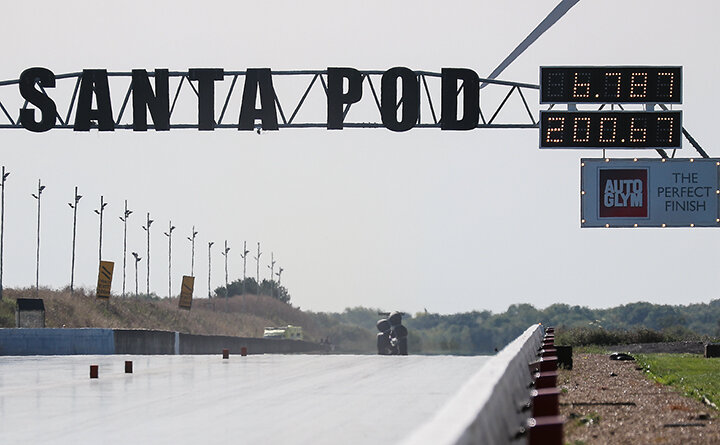World’s Quickest/Fastest 6-second, 200mph 2.5L Daimler V-8 Rear Engine Dragster
November 2020 • By Nick Davies, ICEAutomotive.com • Photos by Mark Evans, Julian Hunt & Andy Willsheer
Presented by RatTrapRacing.com & USAutomotive.co.ukRobin Read’s 2.5L Daimler Hemi-powered RED: 6.787/200.67mph. Photo Julian Hunt
“What is that thing?”
A reasonable question for a seasoned racer like Tom Prock, standing next to the ‘Little Car’ on a dark September evening in the late nineties after Robin Read had just made another pass in the 6s at over 190mph. The team were servicing the car as two Americans wandered into their pit for a closer look. Harlan Thompson shook his head, unable or unwilling to answer.
You know something is different when the blower is bigger than the block. Photo Mark Evans
“It’s a Daimler.” Responded team principal and driver, Robin Read.
“What size is it?”
“2.5 Litres”
“What’s that in real money?”
“152 cubic inches. 3-inch bore and 2.75-inch stroke”
“You’re kidding me. Whose pistons do you run?”
“Venolia”
“I don’t think so. You see I’m Tom Prock, VP of Venolia and I’ve never made a piston for a Daimler.”
“Pleased to meet you Tom. Joe Pisano supplied 20 of them.” Replied Robin.
“I don’t think so, Robin. Joe sadly died over five years ago.”
The story begins with these tiny, 3-inch dia. Venolia pistons—small enough to fit in your hand
“I heard that. But he supplied them to us over ten years ago and we haven’t hurt one yet!” Crewman Mark Evans reached into a drawer and pulled out two new, spare pistons saying, “ The other ten are back at the workshop.”
Tom shook his head, and told them that he didn’t believe them but offered to make them another set FOC. The team still have the new set, unused.
Edward Turner, who left Triumph Motorcycles in the fifties, applied his ‘Speed Twin’ motorcycle design principles to the Daimler hemi. There were two versions: the 4.5L and the 2.5L of which 20,000 were made between 1959 and ’69 and they were installed in the SP250 sports car and the Majestic Major sedan. In the UK, prior to the advent of the Internet and global parts availability, racers tended to use what was readily available and what they could make. One of these racers was Robin Read and what was available was a 2.5L Daimler.
Robin Read
Being part of the ‘Read dynasty’, brothers Robin, Steve, Glen and Tim, plus patriarch Jim were bitten by the drag racing bug when they all visited Santa Pod. Jim, Robin and Glen all debuted different race vehicles in 1972. Robin migrated from a bike to a Volvo-powered FED and then in 1981-’82 drove his first RED powered by a blown 2.5L Daimler hemi on methanol. Along with other notable Daimler racers John Whitmore and Russ Carpenter, each running nitro, Robin developed the car and engine on methanol, eventually running 9.30s/140mph, until one meeting at Santa Pod in 1985 where the legendary Dennis ‘Daddy’ Stone lent him a hand. The conversation went:
Robin to Dennis: “I think that we are going to get beaten by Russ Carpenter here. His car is quite a bit faster.” (Russ had broken into the 7’s in 1980 becoming the first sub-5L car ever to make that breakthrough).
Dennis: “Why’s that?”
Robin: “Well, we are on methanol and he’s on nitro.”
Dennis: “Well, why aren’t you on nitro?”
It was a reasonable question and the introduction of nitro in 1986 netted Robin a new PB in the 8.70s.
Competing in the 30-team strong ‘Euro Series’, 1987 saw the team firmly into the mid-7s, the ’88 season gained a runner-up spot and the ’89 series went to the wire. Second in points, Robin made the final in the last race of the series against points leader Russ Carpenter. Needing to win the round as well as re-set both the speed and ET records in order to amass enough points to overhaul Russ’s points lead, there was everything to gain.
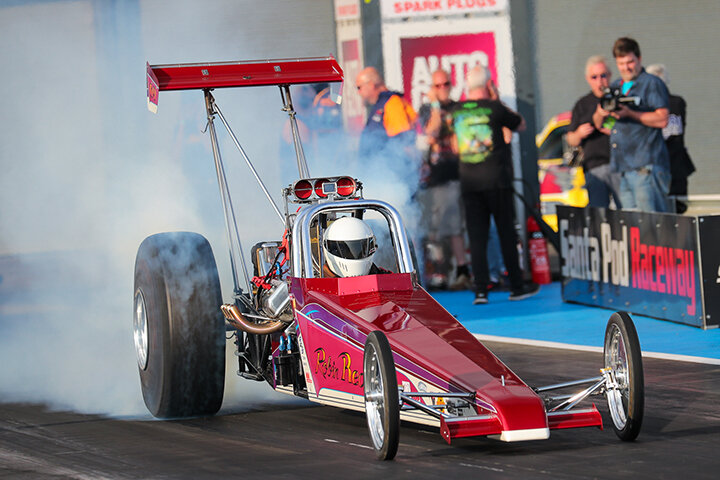

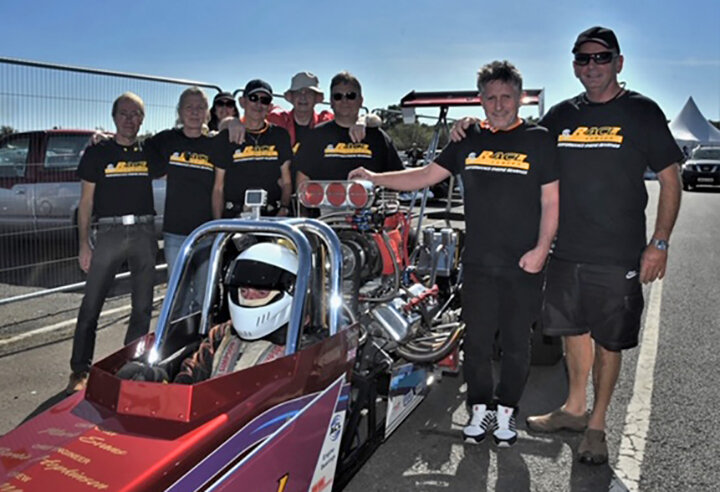
Upping the percentage to 92, Robin took nearly two tenths off his previous PB running 7.04/186mph, breaking both records and winning not only the meeting but also the ’89 Euro Series. Could they be the first Daimler-powered car to run a 6 by the end of the ’89 season? That question was answered when Robin ran 6.88/193 at Santa Pod. A huge milestone for the team and for British drag racing.
Having been developed to run in a ‘heads-up’ eliminator, the demise of the Euro Series left the car with no natural class in which to race, though the motivation of the team never diminished and the whole package had been refined over time in the pursuit of increased durability and a 200mph speed.
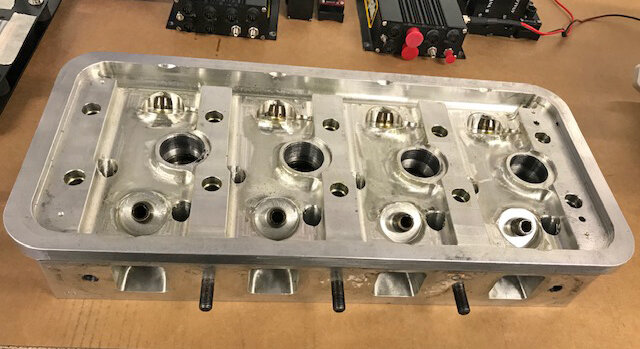

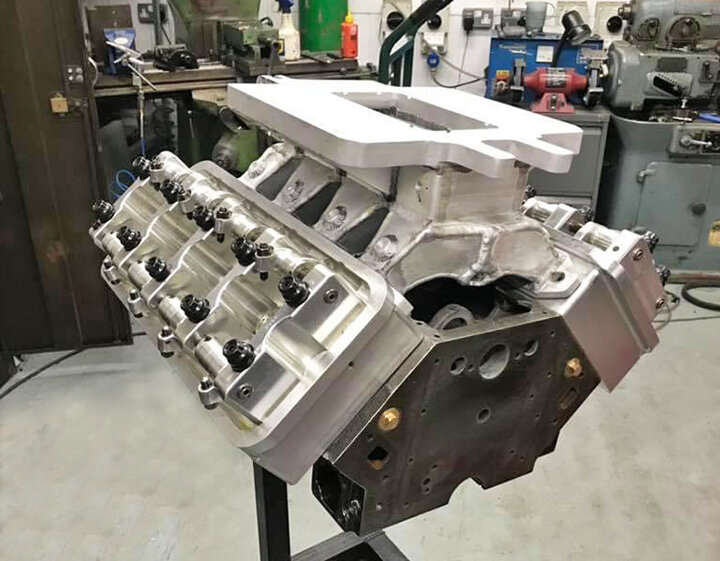
Although the performance figures may not seem extraordinary by current standards, consider that throughout the development cycle the performance industry offered virtually nothing for the Daimler. Many of the performance and durability solutions that racers take for granted were simply not available. The team of Robin, Mark Evans and Bertie Hopkinson (or ‘Bert the Rod’ / ‘Billet Bertie’ depending on who you talk to….) addressed each area in turn and innovated.
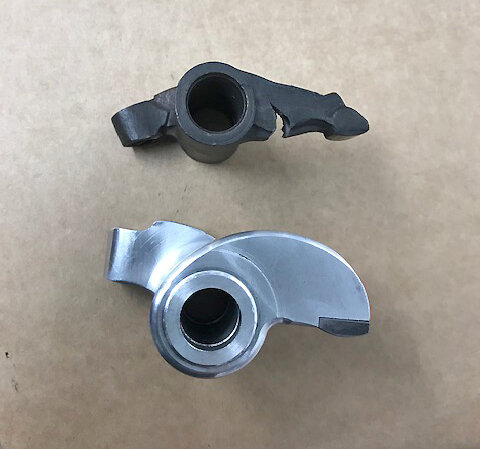

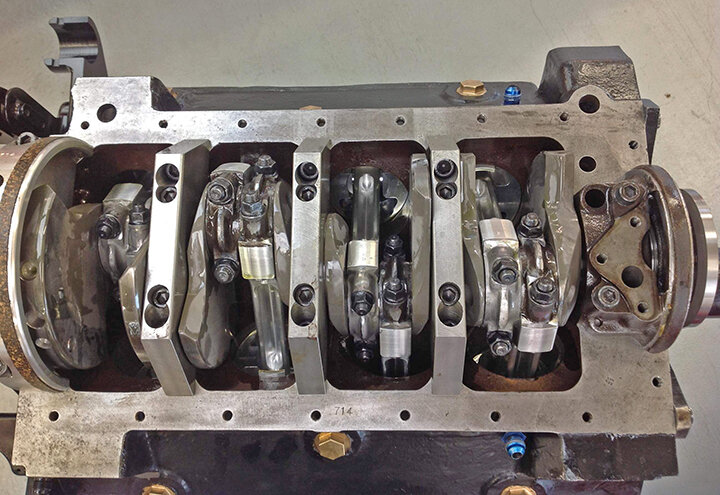
Mains caps, rods, and rockers were all designed and manufactured by Bertie Hopkinson
Bertie is a toolmaker who’s racing intro was to make rods for Alan ‘Grandad’ Nash and son Graham’s Honda. Success led to requests from numerous other teams including Robin and Team Readspeed where his engineering and fabrication skills have addressed innumerable issues on the Daimler. From billet aluminum rods, through billet rocker arms and complete rocker systems, main caps, intake and exhaust valves, mag drive, even a blower case extension to facilitate the use of over-size rotors in a smaller case as well as a complete clutch. All were completed on manual machines. Nearly thirty years ago, Bertie also completed the first pair of billet cylinder heads for the Daimler that were never used until the introduction of the new ‘Spirit of Le Patron’ car to celebrate father Jim’s car ‘Le Patron.’
New car? Why the new car? Crew chief Mark Evans explained:
New chassis was fabricated by Wayne Allman at Intergalactic Customs.
The 8-¾-inch Chrysler axle in the original ‘Little Car’ proved to be fragile so a new Strange Engineering 9-inch was ordered. Once received, it was obvious that installation would necessitate ‘rear-ending’ the chassis. Something they didn’t want to do, as the car is almost a late-eighties ‘time capsule,’ still running a heavily modified factory iron block, factory heads, factory stock crank, factory timing gear and valve covers. After much debate, they decided to preserve the ‘Little Car’ as is (but with one last challenge to overcome) and build the new ‘Spirit’ car to current safety standards while including modern thinking to take the Daimler to the next level.

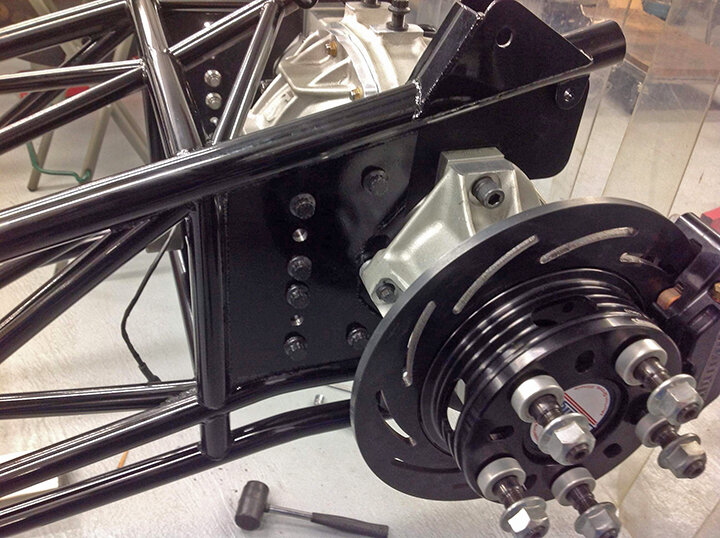
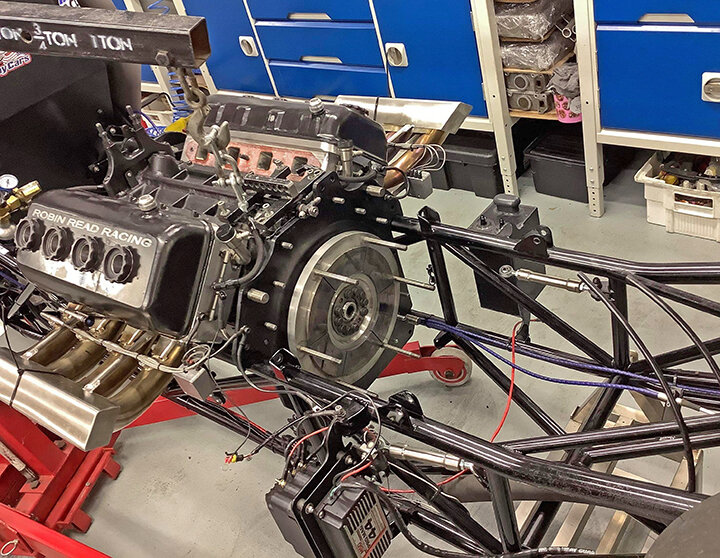
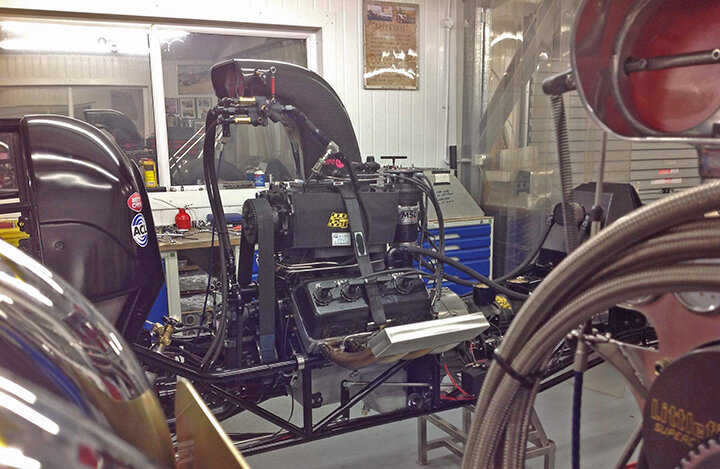
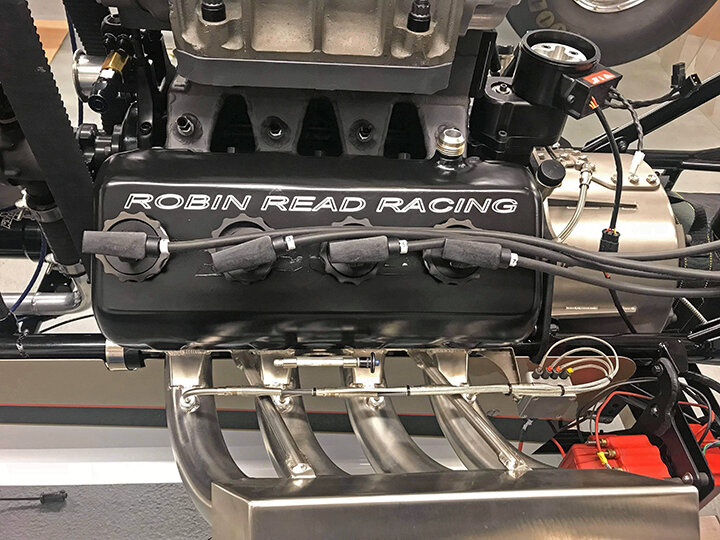
A new basic chassis was spec’d and built by Wayne Allman at Intergalactic Customs. Once delivered, the team finished it to their requirements fitting an entirely new drivetrain. With a bigger fuel pump, improved blower, the billet heads that Bertie had completed nearly thirty years previously and, for the first time, a data logger, the team went to the track with high hopes. The fourth pass on a completely new car and combination netted the timing ticket that the Team had been looking for, for so long: 6.78 at that magical 200.67mph.
Unfortunately, the car has no natural class in which to race so, why bother? Go racing with your friends for nearly fifty years and look at the fun you have, the memories you make, the problems you solve, the personal achievement and satisfaction. If you don’t ‘get it’, that’s fine. But think about it hard before you knock it.
Beautiful and fast but sadly, no natural class in which to race. Photo Julian Hunt
The ‘Little Car’ had been the first Daimler to run a 6, the new ‘Spirit’ car, the first to run 200mph. Two pieces of history secured and so much more to come from the new car.
Finally, the magic numbers…. Photo Julian Hunt
But what about the old car? Retirement? Having run a best of 6.69/199.89, that’s pretty much 200mph, right? Wrong. It’s close, but the Team want that 200mph ticket. Retirement will have to wait….
The team, left to right: Damian Burke, Ella Chapman, Robin Read, Bill Mears, Mark Evans and Gregory Veale
As well as crew chief Mark, and chief engineer Bertie, Robin would also like to thank integral team members Bill Mears, Ella Chapman, Damian Burke, Mark Evans and Gregory Veale. Search for ‘Robin Read Drag Racing’ on Facebook to follow the team’s progress.





